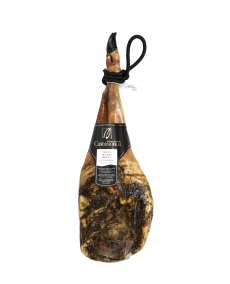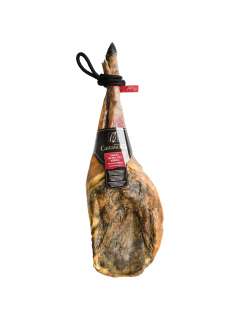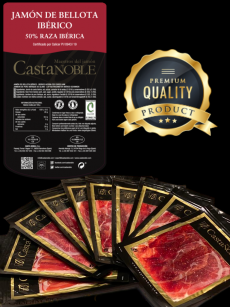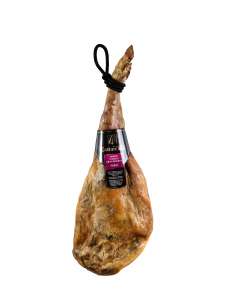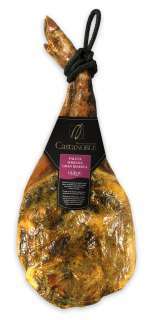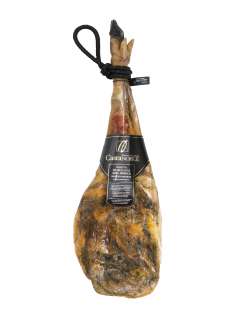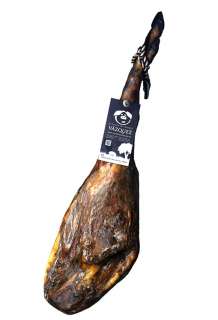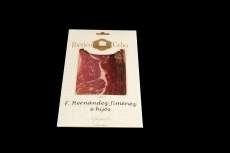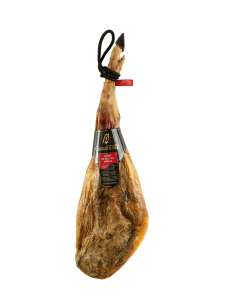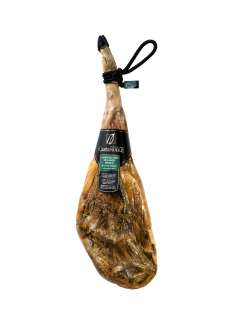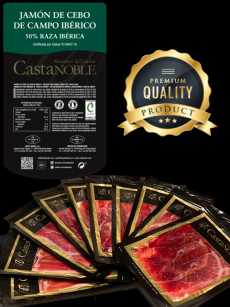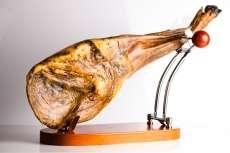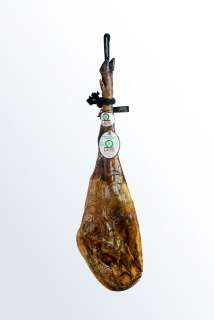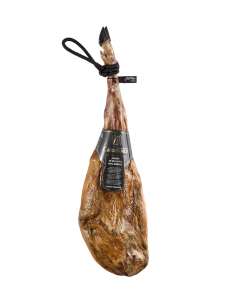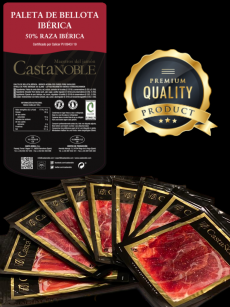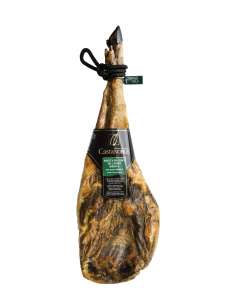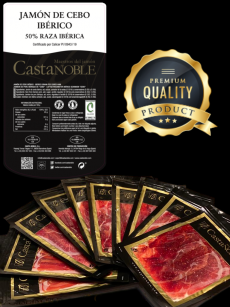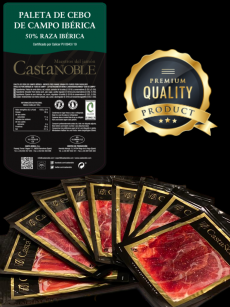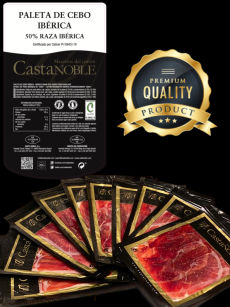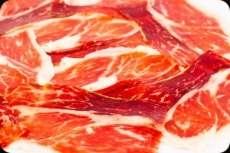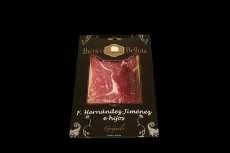Introduction
Historically, Spanish ham has been a staple diet of the Iberian Peninsula's inhabitants for centuries. The use of salt, in curing and drying, was a common and important method of preserving meat during times of antiquity, allowing families access to a good source of protein that was long-lasting and nutritious - not to mention, simply delicious! During the reign of the Moors, pork products were forbidden. However, when Christian rule was restored, the production of Serrano ham and Iberico ham was enthusiastically revived. It was during these times that Jamon de pata negra was considered to be highly prized. Today, these hams are as popular now as they were back then, although their appeal is now international as well as domestic.
Discovering Spanish ham is a delightful assault on the senses, and something that must be tried. SpainFlavor.com is the ideal place to browse various Spanish hams, especially their amazing Iberico ham - as good as the traditional pata negra!
Two of the most well-known varieties of Spanish ham, as previously referred to, are: Serrano ham and Iberico ham - including Jamon de Pata Negra. Let's take a closer look at these tempting delicacies.
Serrano Ham
Serrano ham, or, in its native tongue, jamon serrano - ham from the sierra/mountains - is predominantly produced from white pigs. The name 'jamon serrano' derives from the mountainous regions in which the ham is cured. The mountains, or sierra, provide an optimum environment of cool, dry air for the curing to develop. The meat itself is dry cured and primarily served in thin slices, however, chunks of Serrano ham are widely available, as are entire hams served on the bone. The feeding of the white pigs is something further to take into consideration. Generally, they are fed similarly to other basic livestock, that is to say, a commercial compound variety of feed is utilised.
The aroma of Serrano ham is intense, yet pleasing; this goes some way to explaining the famously sweet taste. Sugar derivatives produced during the period of maturation provide that sweet flavour. Offsetting the sweetness are the slight, but delicious, bitter notes, alongside the familiar salty seasoning of all pork products. Perfect partners to serve alongside Serrano ham are cherry vine tomatoes, and red wine, particularly Rioja.
Although considered a delicacy, Serrano ham is more affordable than the expensive Iberico ham, especially when being purchased within the European Union. Costly duties charged on meat imports can considerably increase the price when buying from outside the EU territories.
Serrano ham does have a system of quality classification, although price is generally the ideal consideration when deciding on quality. The system is based on the duration of curing that has elapsed, the longer time being of the higher quality. The terminology used to classify the duration is as follows: Jamon bodega - 9-12 months, Jamon reserva – 12-15 months, and Jamon gran reserva – 15+ months.
It is worth noting that Serrano ham, alongside Iberico ham, holds TSG status. This essentially means it has 'protected designation of origin' - in other words, Serrano ham holds particular qualities and differentiations to other types of Spanish ham, or meat in general, making it one of a kind. TSG products are certified by maintaining the same production methods, and making use of the same tools and materials for a minimum of 30 years.
Iberico Ham/Jamon de Pata Negra
There is a distinct difference between the two main varieties of Spanish ham. Iberico ham, as opposed to Serrano ham, must be produced from the black Iberian pig, or a crossbreed of at least 50% Iberian. Iberico ham - in Spanish, jamon iberico - is an amazing culinary delight that is extremely popular with general consumers and meat connoisseurs alike.
In production of Iberico ham, the black pigs are fed a specialised diet. Dependent on the diet, a classification system is employed to distinguish the scale of quality. Black Label - sometimes erroneously confused with jamon de pata negra - is the highest in the scale. Known as "Jamon iberico de bellota", this variety is produced from pure-bred black Iberian pigs which have been fed only on acorns while roaming freely in oak forests during the period before slaughter. Red label jamon iberico de bellota, the subsequent grade, is produced in a identical format, the only difference being that the pigs are not 100% pure bred. Third on the scale is green label, otherwise referred to as jamon iberico cebo de campo, produced from pigs that are put out to pasture, and fed acorns and grain. Finally, jamon iberico de cebo - white label - comes from grain-fed pigs and is the most affordable variety.
The superior grades of Iberico ham are noticeable in the subtle nuances of flavour, where one can enjoy nutty tones from the presence of acorns in the pigs' diet. The free-range aspect, at higher levels of the classification, also contribute to the taste due to the extra exercise that these pigs have access to. Iberico ham, especially when referred to as pata negra, has a marbling effect within its texture, and the higher fat content provides a richer, more refined taste than Serrano ham.
About Jamon de Pata Negra
Colloquially, the term 'jamon de pata negra' would traditionally refer to jamon iberico that came exclusively from Iberian pigs with black hooves. This was considered to be the very best variety of Spanish ham, however, that is a myth. Considering that jamon translates as ham, and pata negra means black leg, and only the best Spanish ham was considered to be from black Iberian pigs; one would have to conclude that all Iberian pigs have black hooves while other species have none at all, which is obviously inaccurate. These days, pata negra refers to Iberico ham from pigs feeded with acorn, or at least a high-quality black label variety. Hence the continuation of the term jamon de pata negra.
Spanish Ham Production
Production of Spanish ham can differ, but generally they are salted and dried for a couple of months. The salt is then removed and drying continues for up to 6 months; the curing process depends on the variety of Spanish ham. Serrano ham cures for at least 9 months, while Iberico ham, or indeed, jamon de pata negra, takes between 24 and 36 months.
As you can see, Spanish ham, especially the revered Iberico ham and pata negra, is a taste that must be sampled. Today, it's just a simple matter of buying online. Those yet to discover it should visit SpainFlavor.com where Spanish ham, from Serrano to pata negra, is available to anyone ready to discover this gourmet delicacy.
 Filter
Filter 



